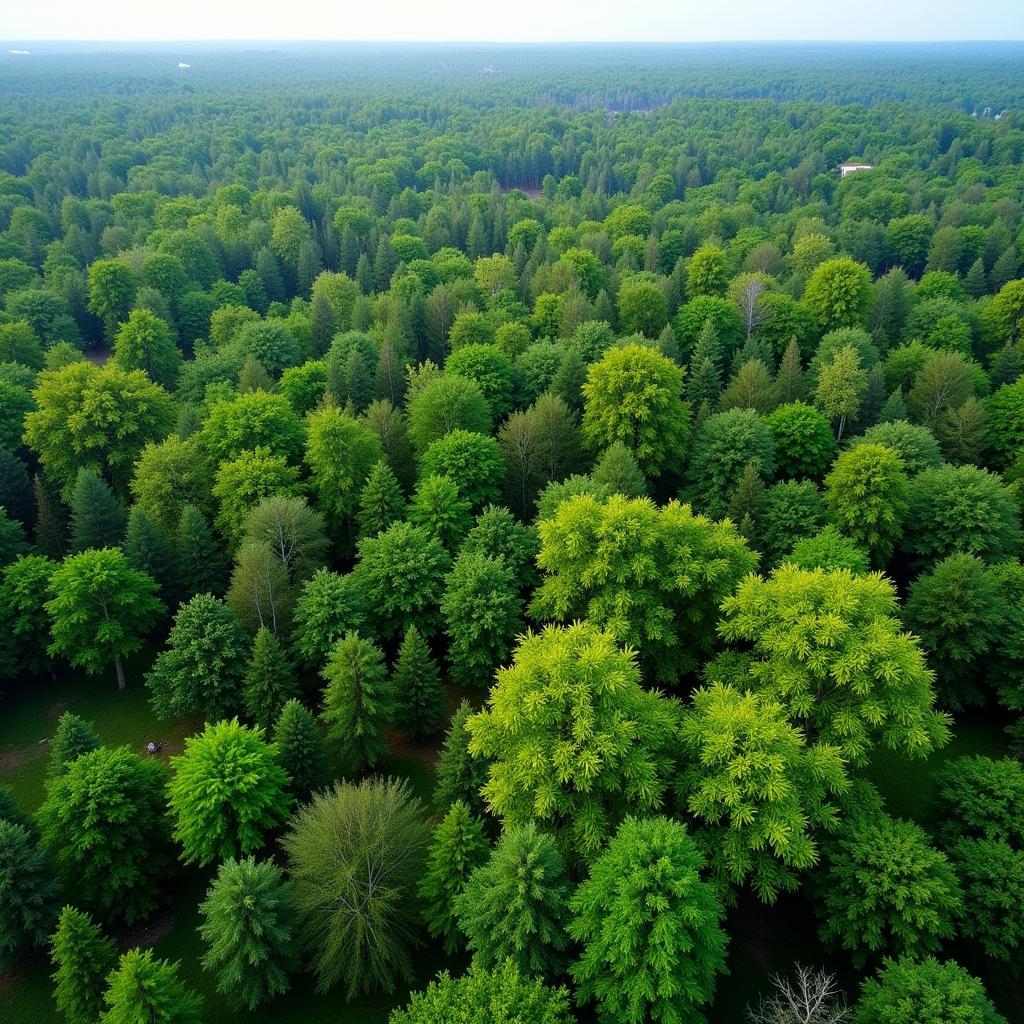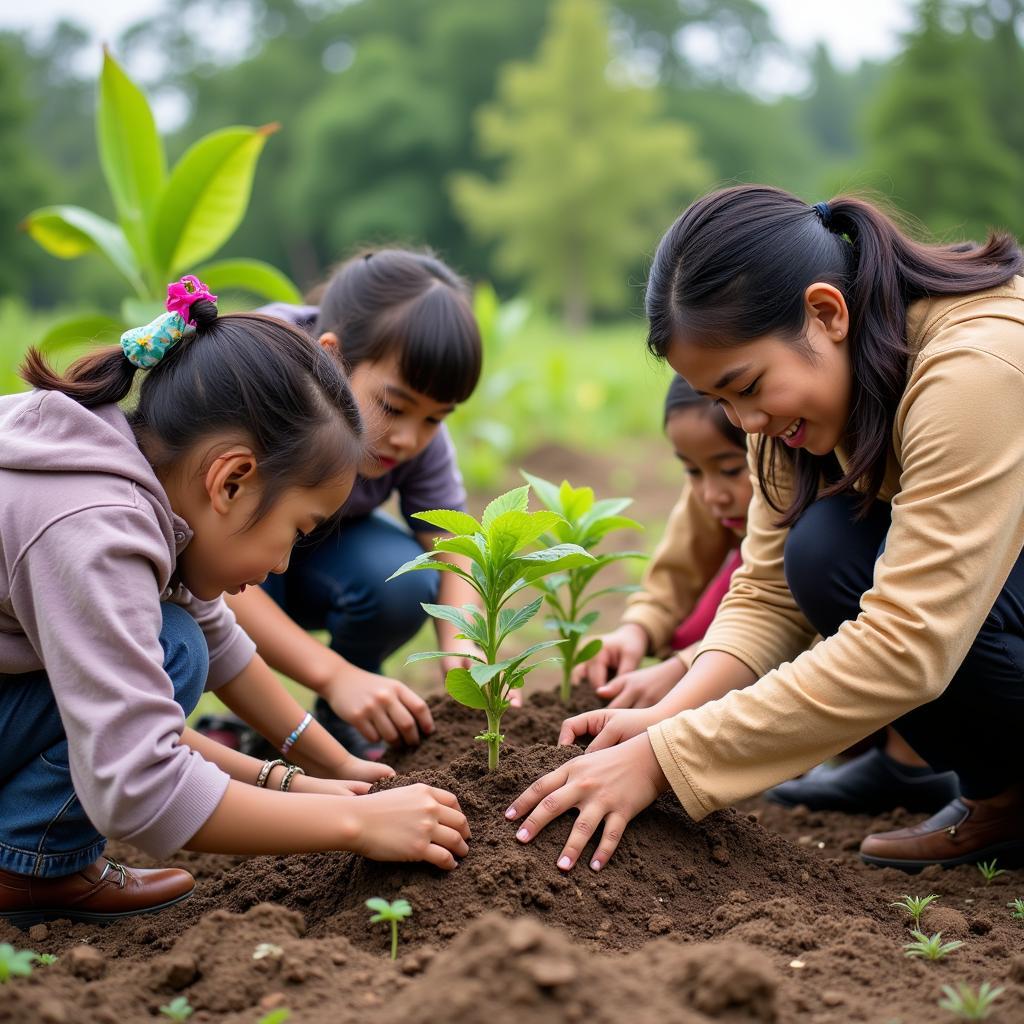Pakistan, a land of diverse landscapes, is home to a variety of tree species that play a crucial role in its ecosystem and economy. From the towering deodars of the Himalayas to the mangroves lining the Arabian Sea, Trees In Pakistan provide essential services, including timber, fuelwood, and fruits. However, despite their significance, trees in Pakistan face numerous challenges, including deforestation, climate change, and a lack of awareness about their importance.
The Importance of Trees in Pakistan
Trees are essential for maintaining a healthy environment and supporting human well-being. In Pakistan, they play a vital role in:
- Climate Regulation: Trees act as carbon sinks, absorbing carbon dioxide from the atmosphere and mitigating the effects of climate change.
- Water Management: Trees help regulate water cycles, preventing soil erosion and mitigating floods.
- Biodiversity Conservation: Forests in Pakistan provide habitat for a wide range of plant and animal species, many of which are endemic to the region.
- Economic Benefits: Trees provide timber, fuelwood, fruits, and other products that contribute to the national economy and support livelihoods.
 Forest Diversity in Pakistan
Forest Diversity in Pakistan
Challenges Facing Trees in Pakistan
Despite their importance, trees in Pakistan are facing a multitude of challenges:
- Deforestation: Pakistan has one of the highest deforestation rates in Asia, driven by factors such as agricultural expansion, urbanization, and illegal logging.
- Climate Change: Rising temperatures, changing precipitation patterns, and extreme weather events are posing significant threats to tree health and survival.
- Lack of Awareness: There is a general lack of awareness among the public about the importance of trees and the consequences of deforestation.
- Pests and Diseases: The spread of invasive pests and diseases is also threatening the health of trees in Pakistan.
 Impact of Deforestation in Pakistan
Impact of Deforestation in Pakistan
Efforts to Protect and Restore Trees in Pakistan
Recognizing the importance of trees and the challenges they face, various initiatives are being undertaken to protect and restore forests in Pakistan:
- National Forest Policy: The government has formulated a National Forest Policy to promote sustainable forest management and increase forest cover.
- Billion Tree Tsunami: The Billion Tree Tsunami project aims to plant billions of trees across the country to restore degraded forests and enhance tree cover.
- Community Forestry: Community-based forestry programs are empowering local communities to manage and protect their forests.
- Awareness Campaigns: Awareness campaigns are being conducted to educate the public about the importance of trees and the need for their conservation.
 Billion Tree Tsunami Initiative in Pakistan
Billion Tree Tsunami Initiative in Pakistan
Fast-Growing Trees in Pakistan
One of the strategies for increasing tree cover quickly is to focus on planting fast-growing trees in pakistan. These species have the potential to provide economic and environmental benefits in a shorter time frame. Some examples of fast-growing trees suitable for Pakistan include:
- Eucalyptus
- Poplar
- Willow
- Mulberry
Fruit Trees in Pakistan
In addition to fast-growing species, promoting the planting of fruit trees in pakistan offers multiple benefits. Fruit trees provide nutritional sustenance, contribute to income generation for farmers, and enhance biodiversity. Popular fruit trees in Pakistan include:
- Mango
- Citrus fruits (orange, kinnow, lemon)
- Apple
- Guava
Avocado in Pakistan: A Growing Trend
Avocado cultivation is gaining popularity in Pakistan. This nutritious fruit thrives in specific climatic conditions, and certain regions in Pakistan offer suitable environments for its growth. Find out more about the potential of avocado in pakistan.
Conclusion
Trees are an invaluable resource for Pakistan, providing numerous ecological and economic benefits. However, deforestation and climate change pose significant threats to their survival. It is crucial to continue and expand efforts to protect existing forests, promote sustainable forest management practices, and encourage widespread tree planting initiatives. By prioritizing the health and well-being of trees, Pakistan can ensure a greener and more sustainable future for generations to come.
FAQs
1. What are the most common types of trees found in Pakistan?
Pakistan is home to a diverse range of tree species, including deodar, chir pine, oak, eucalyptus, poplar, and willow.
2. How does deforestation impact the environment in Pakistan?
Deforestation leads to soil erosion, loss of biodiversity, climate change, and increased vulnerability to natural disasters.
3. What is the government doing to protect trees in Pakistan?
The government has implemented the National Forest Policy and initiated projects like the Billion Tree Tsunami to promote afforestation and sustainable forest management.
4. How can individuals contribute to tree conservation in Pakistan?
Individuals can plant trees, participate in awareness campaigns, support organizations working on forest conservation, and adopt sustainable practices in their daily lives.
5. What are the economic benefits of trees in Pakistan?
Trees provide timber, fuelwood, fruits, medicines, and other products that contribute to the national economy and support livelihoods.
For any queries or assistance regarding trees in Pakistan, please contact us at:
Phone Number: +923337849799
Email: [email protected]
Address: Dera Ghazi Khan Rd, Rakhni, Barkhan, Balochistan, Pakistan.
Our customer support team is available 24/7 to assist you.